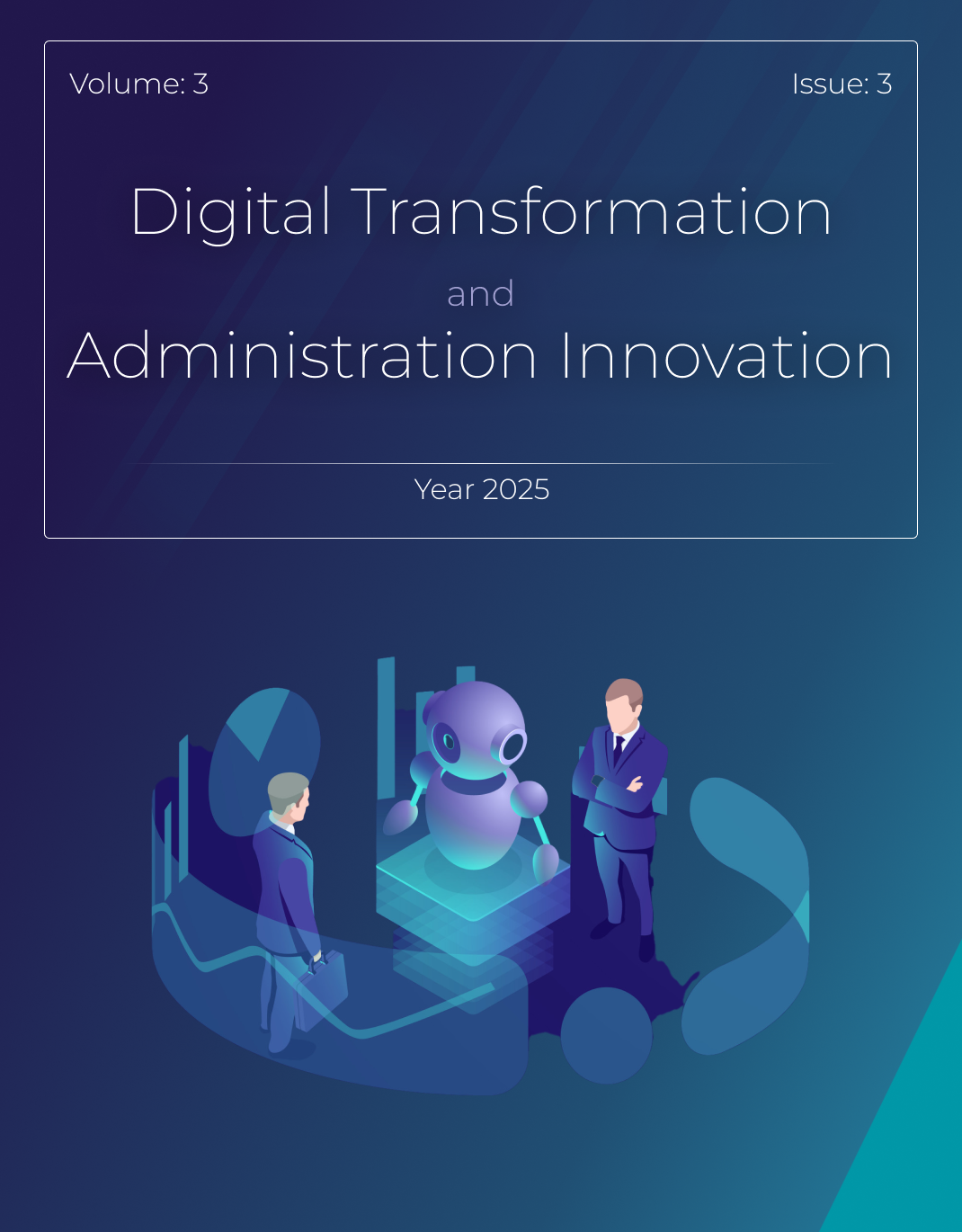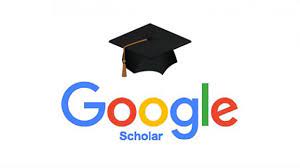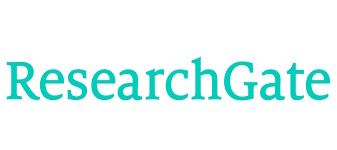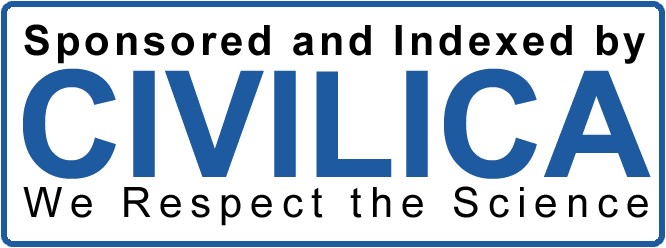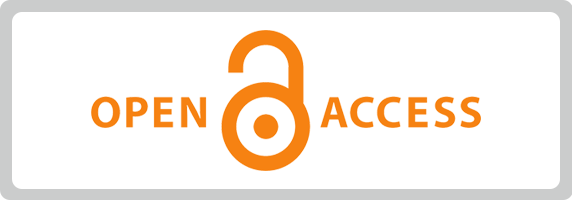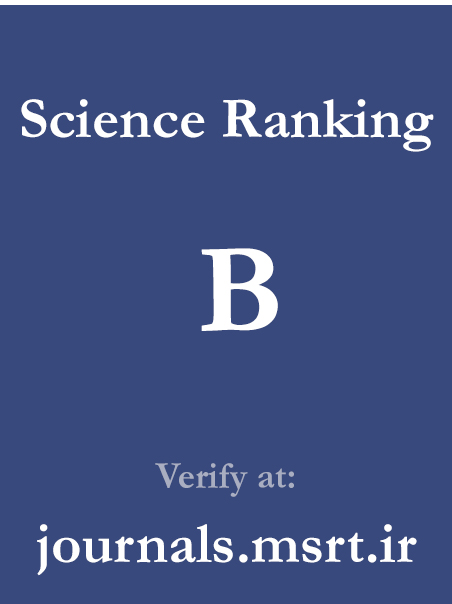Structural Equations of the Organizational Innovation Model with the Role of Intellectual Capital in Organizations
Abstract
Undoubtedly, human capital constitutes the core pillar of every organization. On the other hand, innovation is indispensable for the survival of organizations. The present study analyzed the structural equations of the organizational innovation model, emphasizing the role of intellectual capital within organizations. Methodologically, the study employed a quantitative-descriptive approach based on structural equation modeling. Furthermore, the study is applied in nature. The statistical population comprised experts, managers, supervisors, and board members of the Ur Company in Iraq, totaling 195 individuals. Accordingly, the sample size was determined as 130 based on Cochran's formula. A researcher-made questionnaire was used as the data collection instrument. To evaluate the reliability of the instrument, Cronbach’s alpha method was applied, yielding an overall reliability coefficient of 0.93. For data analysis, structural equation modeling was conducted using Amos version 24. Based on the research findings, causal conditions had a significant effect on the core phenomenon. The standardized path coefficient (β) was 0.66. The standardized path coefficient for intervening factors on strategies was 0.26, indicating a positive and moderate relationship between contextual factors and strategies. The standardized path coefficient (β) for strategies was 0.32, reflecting a moderately positive relationship between strategies and outcomes. Ultimately, all model fit indices, including RMSEA and CFI, demonstrated acceptable results, indicating a good fit of the proposed model with the data. It can be concluded that innovation based on an intellectual capital approach—especially in large companies such as Ur Company in Iraq—can, through the utilization of appropriate organizational infrastructures, innovative strategies, and knowledge management, lead to enhanced performance and organizational credibility.
Downloads
References
Ali, S., Murtaza, G., Hedvicakova, M., Jiang, J., & Naeem, M. (2022). Intellectual capital and financial performance: A comparative study. Frontiers in psychology, 13, 967820. https://doi.org/10.3389/fpsyg.2022.967820
alkhatib, a. W., & Valeri, M. (2024). can intellectual capital promote the competitive advantage? service innovation and big data analytics capabilities in a moderated mediation model. European Journal of Innovation Management, 27(1), 263-289. https://doi.org/10.1108/EJIM-04-2022-0186
Barak, M., & Sharma, R. K. (2024). Does intellectual capital impact the financial performance of Indian public sector banks? An empirical analysis using GMM. Humanities and Social Sciences Communications, 11(1), 208. https://doi.org/10.1057/s41599-024-02702-5
Beigi Siassal, M., Aminpanah, C., & Khatiri, M. (2024, June 10, 2024). Analyzing the Impact of Intellectual Capital on Financial Flexibility with Emphasis on the Moderating Role of Tax Avoidance and Financial Leverage of Companies. First National Conference on Modern Applied Research in Business and Industrial Development, https://civilica.com/doc/2037857
Hu, W., & Tresirichod, T. (2024). Impact of Green Entrepreneurial Orientation on Sustainable Performance: The Mediating Role of Green Intellectual Capital and Green Supply Chain Management. Asian Administration & Management Review, 7(1). https://so01.tci-thaijo.org/index.php/AAMR/article/view/272653
Jayabalan, J., Dorasamy, M., & Kaliannan, M. (2024). Thriving in scarcity: Harnessing intellectual capital for open frugal innovation. Journal of Open Innovation: Technology, Market, and Complexity, 10(2), 100300. https://doi.org/10.1016/j.joitmc.2024.100300
Kafili, V., Mirzaei Nezamabad, M., & Hosseinlou, H. (2022). Intellectual Capital and Its Impact on the Financial Performance of Pharmaceutical Companies. Development and Capital, 7(2), 157-172. https://jdc.uk.ac.ir/article_3318.html?lang=en
Mohammadi Yazdi, A., Mirsepasi, N., Mousakhani, M., & Hanifi, F. (2024). Investigating the Status of Human Resource Management Development Indicators Based on Competency Components in the e-Commerce Development Center of the Ministry of Industry, Mines and Trade. Dynamic Management and Business Analysis, 2(4), 180-199. https://doi.org/10.22034/dmbaj.2024.2035663.2412
Nazir, S., Ali, M., Saeed, M., Mubarik, M. S., & Jalil, Q. (2024). Sustainable performance and disaster management in the oil and gas industry: An intellectual capital perspective. [Journal Name Not Provided]. https://doi.org/10.1016/j.erss.2024.102330
Niwash, M. N. K., Cek, K., & Eyupoglu, S. Z. (2022). Intellectual capital and competitive advantage and the mediation effect of innovation quality and speed, and business intelligence. Sustainability, 14(6), 3497. https://doi.org/10.3390/su14063497
Pazaki, M. (2024). Designing a paradigmatic model for sustainable rural tourism entrepreneurship development with an emphasis on strategic orientation and green intellectual capital (Case study: Villages of Shahroud County). Village and Development, 27(2).
Rahimi, H., Sharif Moradi, K., Ismailzadeh Ghomshehi, Z., & Sheikh Samani, H. (2022). Organizational Innovation: The Process of Moving Toward Optimal Organizational Conditions to Enhance Effectiveness. The First National Conference on Innovation in Humanities and Social Sciences, Kashan. https://en.civilica.com/doc/1623185/
Samimi, M., Mirjomhari, A., & Ghorbani, R. (2021). Investigating the Effect of Intellectual Capital on the Performance of Defense Knowledge-Based Organizations with the Mediating Role of Organizational Innovation. Military Sciences and Techniques, 17(58), 29-48. https://www.qjmst.ir/article_248688.html?lang=en
Seifollahi. (2024). Analyzing the Effect of Green Marketing Mix and Green Brand Attitude on Urban Tourism with the Mediating Role of Green Intellectual Capital. Urban Tourism Journal, 11(3), 37-53. https://jut.ut.ac.ir/article_98576.html
Shafaat Takoldan, M., Jahanshad, A., & Pourzamani, Z. (2024). Explaining the model of intellectual capital and competitive advantage in startups. Dynamic Management and Business Analysis, 3(5), 332-350.
Shahriari, S., & Shahrabi Farahani, M. (2021). Explaining the Role of Organizational Innovation and Social Capital. Management Studies of Development and Evolution, 30(99), 79-102. https://jmsd.atu.ac.ir/article_12634.html?lang=en
Taheri Hoshi, A., & Aroni Tabatabaei, S. M. (2024). Examining the Impact of Organizational Intelligence, Intellectual Capital, and Organizational Innovation on Business Intelligence in Pasargad Insurance Company. Management and Industrial Engineering, 5(17), 61-80.
Taheri Hosseini, A., & Aruni Tabatabai, S. M. (2023). Examining the Impact of Organizational Intelligence, Intellectual Capital, and Organizational Innovation on Business Intelligence in Pasargad Insurance Company. Management and Industrial Engineering, 5(17), 61-80.
Tetteh, A. B., Awartey, S., Mawutor, J. K. M., Aveh, F. K., Antwi, S., & Ofoeda, I. (2024). Corporate Social Responsibility Reporting, Intellectual Capital, and Financial Performance of Listed Firms in Ghana. Journal of Comparative International Management, 27(2), 114-137. https://doi.org/10.55482/jcim.2024.33791
Truong, B. T. T., & Nguyen, P. (2024). Driving business performance through intellectual capital, absorptive capacity, and innovation: The mediating influence of environmental compliance and innovation. Asia Pacific Management Review, 29(1), 64-75. https://doi.org/10.1016/j.apmrv.2023.06.004
Xu, J., Haris, M., & Liu, F. (2023). Intellectual Capital Efficiency and Firms' Financial Performance Based on Business Life Cycle. Journal of Intellectual Capital, 24(3), 653-682. https://doi.org/10.1108/JIC-12-2020-0383
Yilmaz, A. A., & Tuzlukaya, S. E. (2024). The relation between intellectual capital and digital transformation: a bibliometric analysis. International Journal of Innovation Science, 16(2), 244-264. https://doi.org/https://doi.org/10.1108/IJIS-08-2022-0145
Zareian Moradabadi, B., Eslam Bolchi, A., Hamidi, K., & Ghobadi Lamouki, T. (2022). An Intellectual Capital Evaluation Model in Iranian State Banks. Journal of Islamic Economics and Banking, 11(39), 167-193. https://mieaoi.ir/article-1-1167-en.html
Downloads
Published
Submitted
Revised
Accepted
Issue
Section
License
Copyright (c) 2025 Mohamad Abdul Hasan Khalif Al Saeidi (Author); Hamid Reza Bahrami (Corresponding author); Tariq Kadhim Shlaka , Enayat Ollah Aghaei, Mehrdad Sadeghi (Author)

This work is licensed under a Creative Commons Attribution-NonCommercial 4.0 International License.
